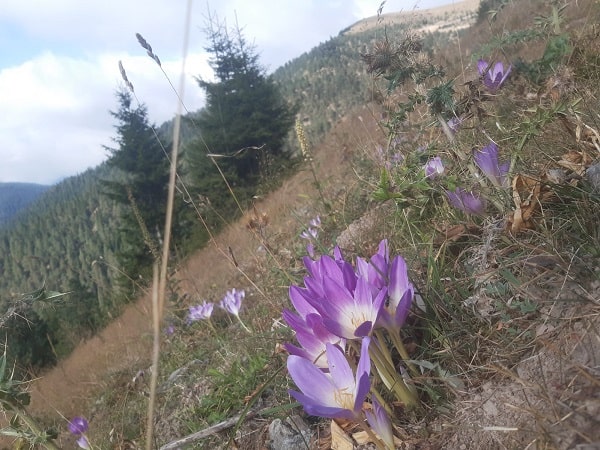Yes, crocus flowers can grow in Canada. In fact, crocuses are well-suited to the climate of many parts of Canada, particularly those with cold winters and early springs. Crocuses are commonly cultivated as ornamental plants in Canadian gardens, parks, and landscapes. They are known for their ability to bloom even in cooler weather, making them a welcome sight as one of the first flowers to appear in the spring.
The timing of crocus blooms in Canada is similar to that in the northern United States and other regions with similar climates. Crocuses typically bloom in early spring, usually from late February to April, depending on the specific location within Canada and the prevailing weather conditions for that year.
The western provinces of Canada, including British Columbia and Alberta, as well as the prairie provinces like Saskatchewan and Manitoba, are known for supporting crocus growth. Similarly, provinces in the eastern part of Canada, such as Ontario, Quebec, and the Atlantic provinces, also provide suitable conditions for growing crocuses.

As with any plant, the success of growing crocuses in Canada depends on factors like soil conditions, planting depth, and local climate variations. Proper care, including providing well-drained soil and adequate moisture during the growing season, will contribute to the successful cultivation of crocus flowers in Canadian gardens.
Where do crocus flowers grow in Canada?
Crocus flowers can be found growing in various regions across Canada, particularly in areas with cold winters and early springs. They are commonly cultivated as ornamental plants in gardens, parks, and landscapes. Here are some specific regions within Canada where crocus flowers can be found:
- Prairie Provinces: Crocuses are often associated with the prairie provinces of Canada, including Alberta, Saskatchewan, and Manitoba. The prairies provide a suitable climate for crocus growth, and the flowers are often seen carpeting fields and grassy areas in the early spring. The purple-flowered Prairie Crocus (Anemone patens) is the provincial flower of Manitoba.
- Western Canada: Crocuses can also be found in other parts of western Canada, including British Columbia. In these regions, crocuses bloom in early spring and add a splash of color to gardens and natural areas.
- Eastern Canada: Provinces such as Ontario, Quebec, and the Atlantic provinces also have suitable conditions for growing crocus flowers. In these areas, crocuses are often planted in gardens and public spaces to welcome the arrival of spring.
- Northern Regions: In some northern regions of Canada, crocuses may bloom slightly later, typically in April or early May, as the snow melts and temperatures gradually warm up.
- Urban Areas: Crocuses are frequently planted in urban parks, botanical gardens, and other public spaces across Canada to provide an early burst of color and beauty after the long winter months.
Crocus species like the Dutch Crocus (Crocus vernus) and the Snow Crocus (Crocus chrysanthus) are commonly grown in Canada for their vibrant flowers and hardy nature. Their early blooms are a cherished sign of spring’s arrival in the country.
Remember that the specific timing of crocus blooms can vary depending on the local climate conditions and the particular species or cultivars being grown. Where Do Crocus Flowers Grow in Canada? >>
Characteristics of the purple crocus flower in Canada
The purple crocus (Crocus vernus), also known as the Dutch Crocus, is a popular spring-flowering bulb in Canada and other regions with cold climates. It is known for its vibrant purple flowers that emerge early in the spring, often before many other plants have started to bloom. Here are some characteristics of the purple crocus flower in Canada:
- Flower Color: The most distinctive characteristic of the purple crocus is its vibrant purple flowers. The flowers can range in shade from light lavender to deep violet, adding a splash of color to the landscape.
- Flower Shape: The flowers of the purple crocus are cup-shaped and have six petal-like tepals. Each tepal has a slightly pointed tip and may have a slightly lighter or darker central stripe, adding to the flower’s visual interest.
- Size: Purple crocus flowers are relatively small, with an average diameter of around 1 to 2 inches (2.5 to 5 cm).
- Early Bloomer: One of the most notable characteristics of the purple crocus is its early blooming nature. In Canada, these crocuses can start to bloom as early as late winter to early spring, often appearing in February or March depending on the region and local weather conditions.
- Growth Habit: Purple crocus plants are low-growing and form clumps of grass-like leaves that emerge from the ground. The leaves are usually green and slender.
- Hardiness: Purple crocus flowers are well-suited to cold climates, including the Canadian climate. They can tolerate frost and cold temperatures, making them one of the first flowers to brave the early spring chill.
- Sunlight: Purple crocuses prefer full to partial sunlight. They often bloom in sunny spots that receive direct sunlight during the day.
- Soil Requirements: These crocuses thrive in well-drained soil that doesn’t become waterlogged. They prefer soil with good drainage to prevent the bulbs from rotting.
- Naturalizing: Purple crocuses have the ability to naturalize over time, which means they can spread and multiply on their own. This can lead to a more extensive display of flowers in subsequent years.
- Ornamental Use: Purple crocuses are commonly planted in gardens, parks, and landscapes for their early spring color. They work well in borders, rock gardens, and under deciduous trees.
- Wildflower Symbolism: In some regions of Canada, the purple crocus is regarded as a symbol of spring’s arrival and renewal after the winter months.
As with any plant, the specific characteristics of the purple crocus can vary based on the growing conditions and the particular variety being cultivated. Do crocus flowers grow in Canada? Canadian Crocus >>
